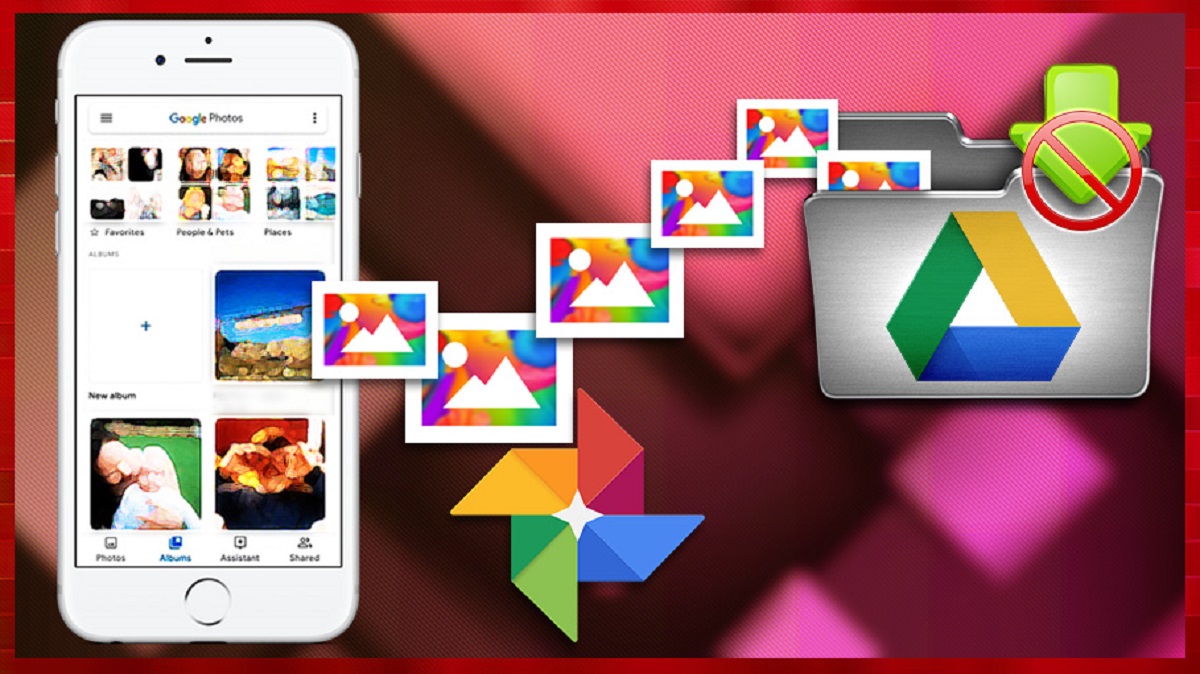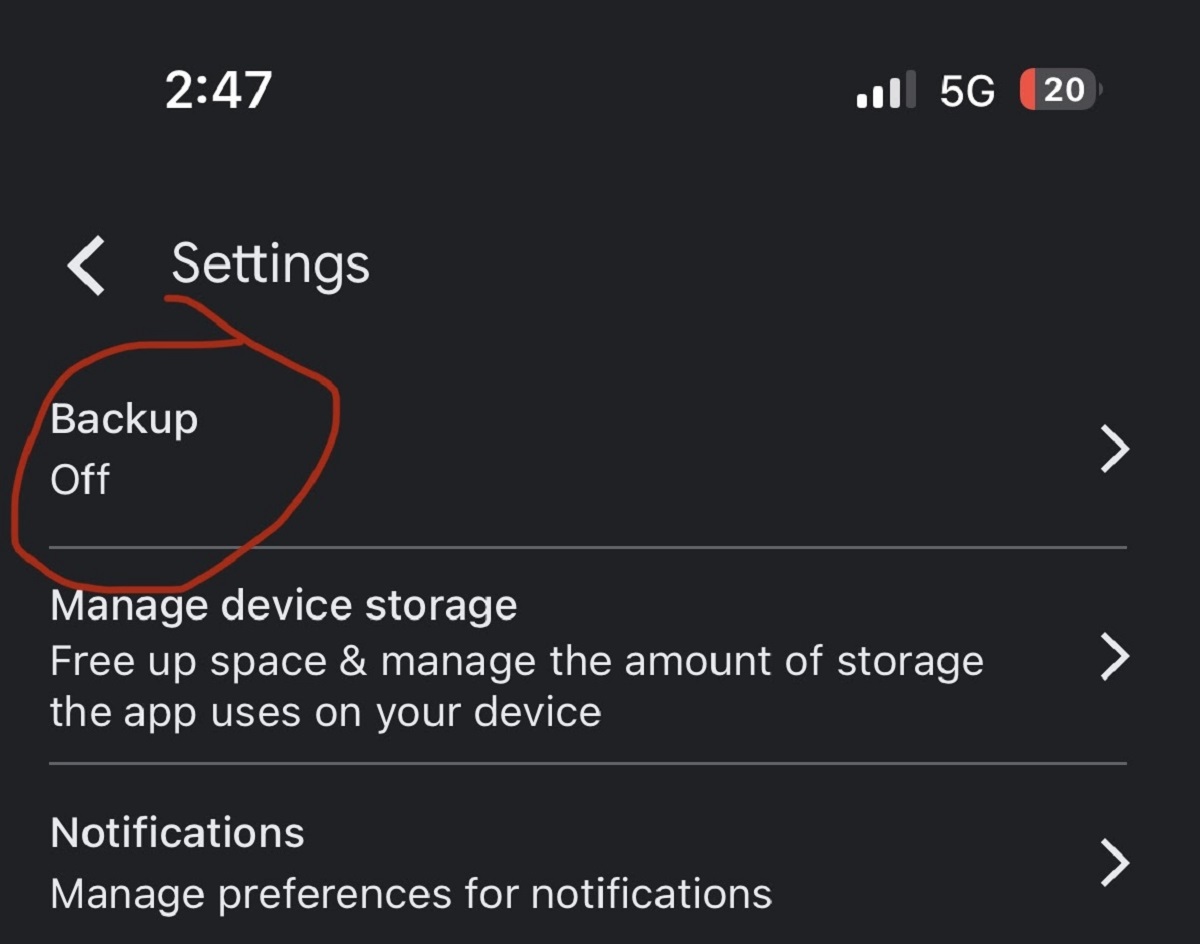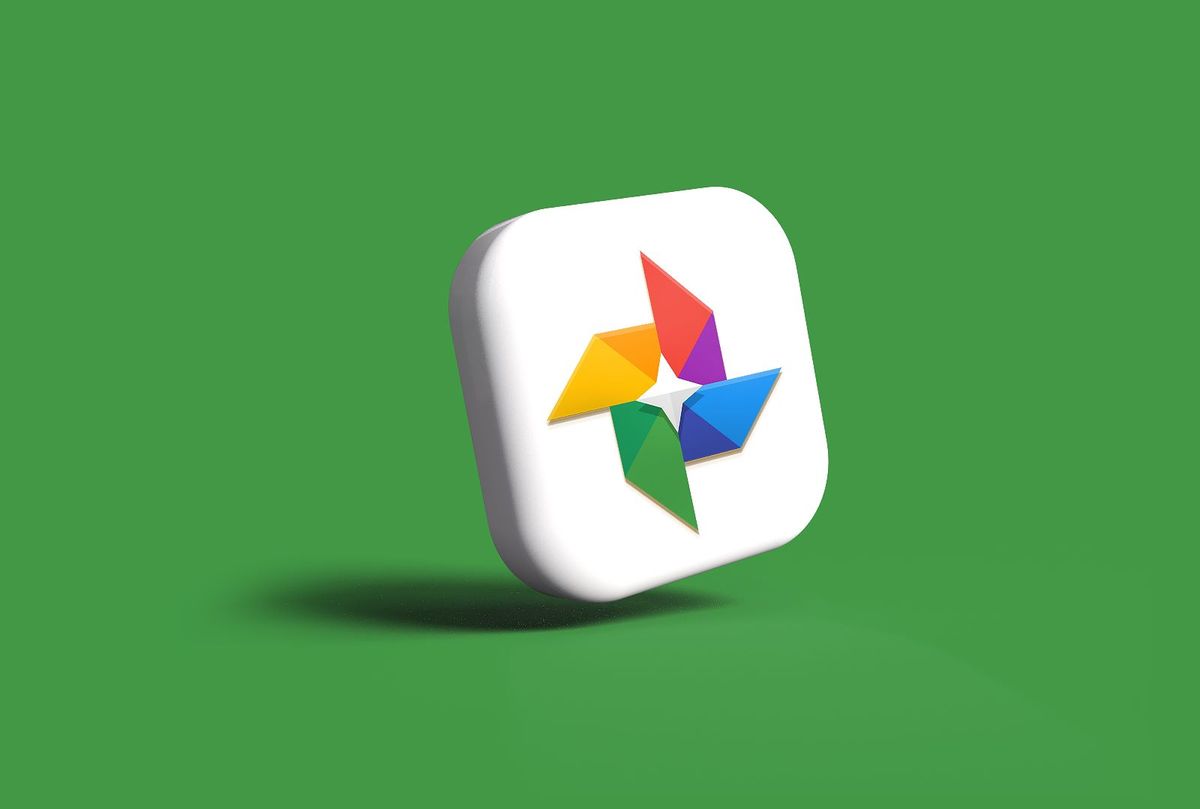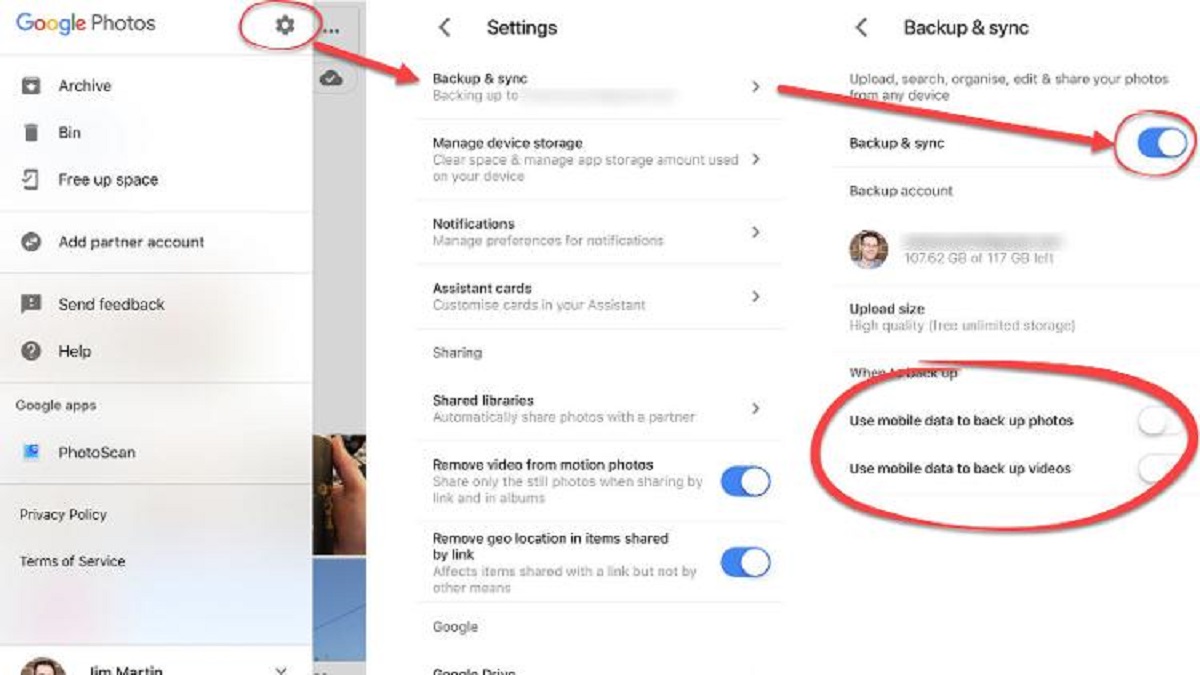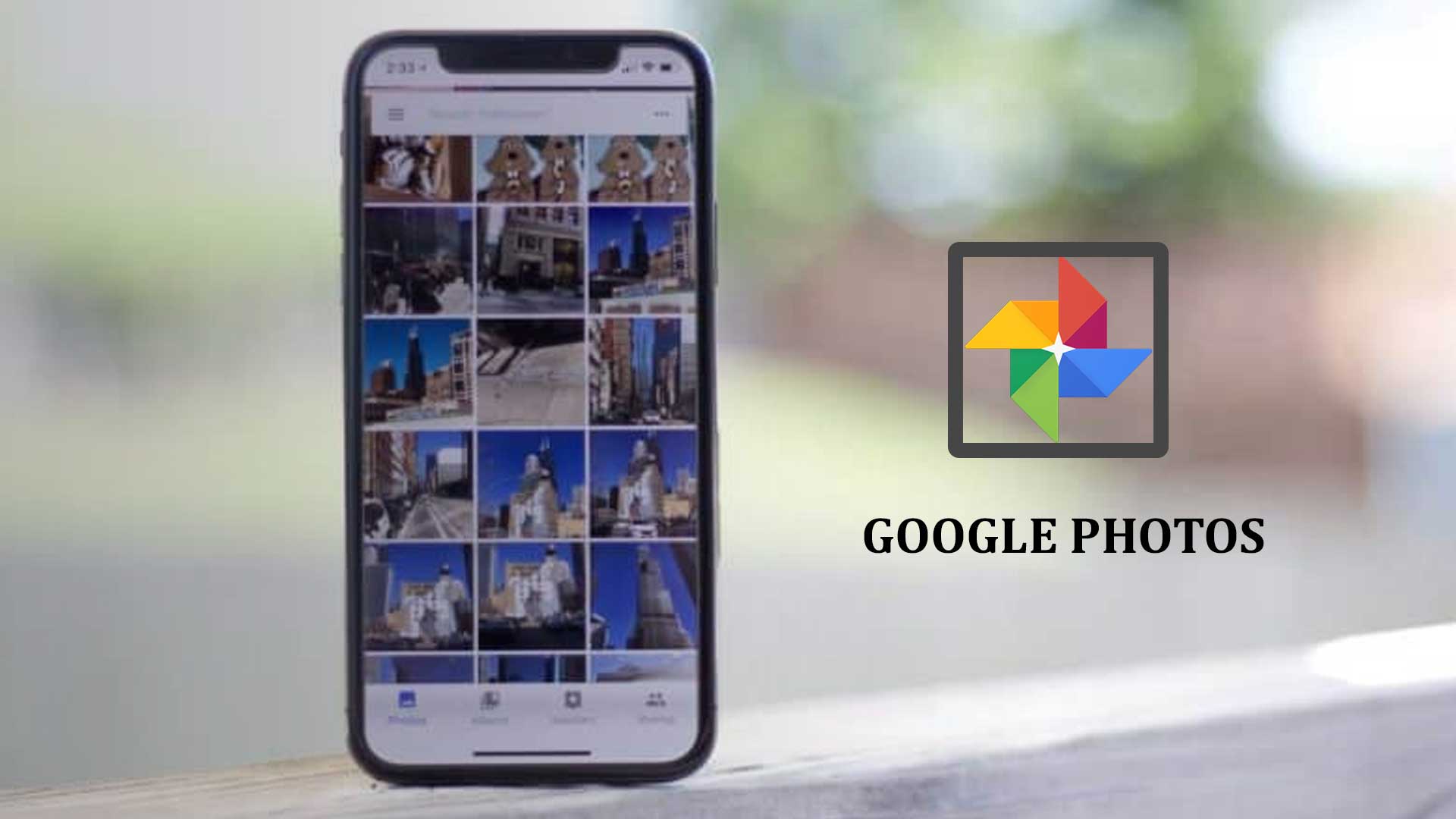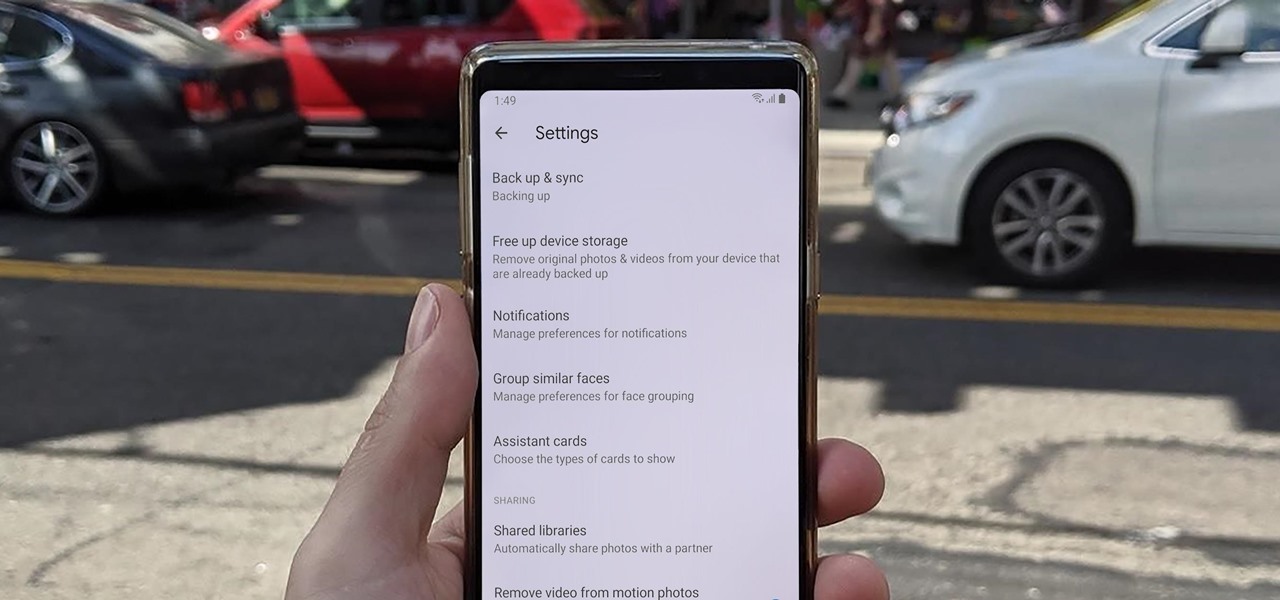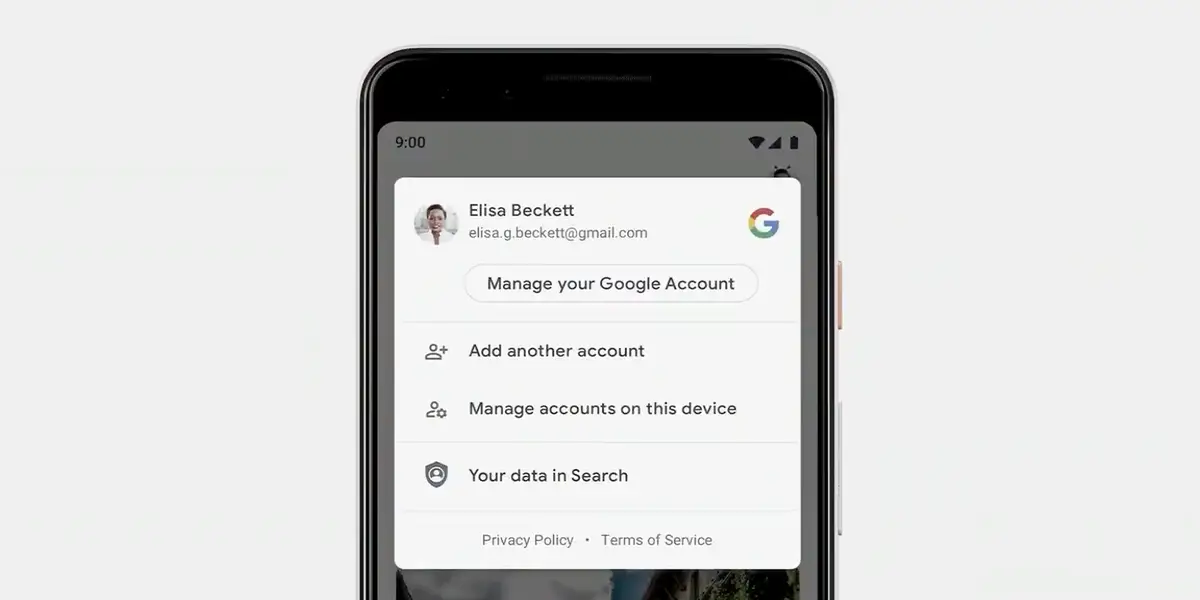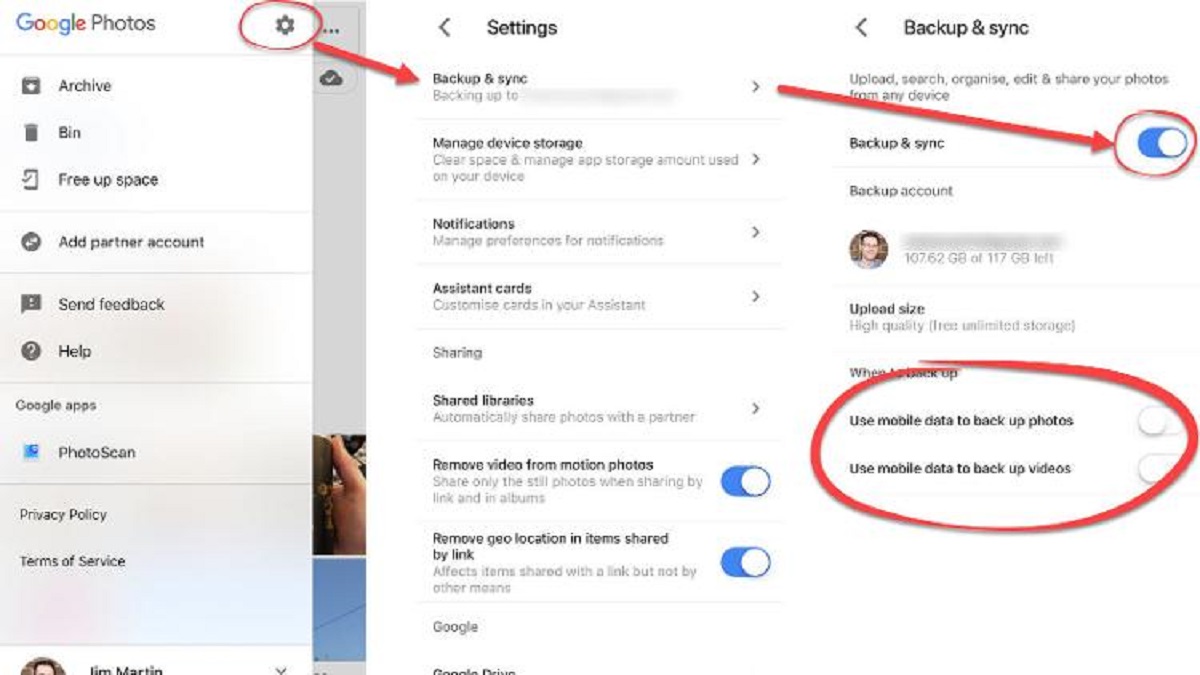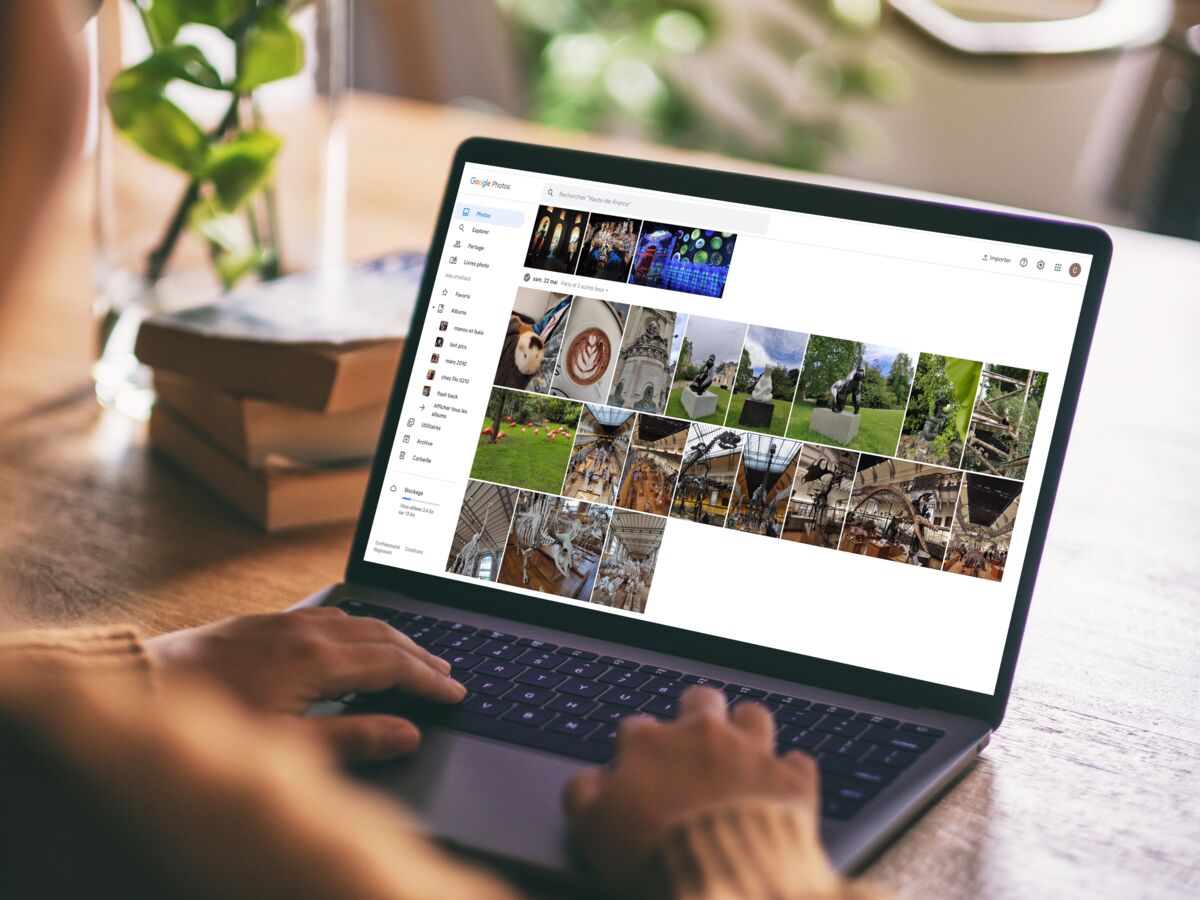Introduction
Google Photos has become the go-to app for storing and organizing our precious memories. With its ability to automatically sync and backup photos and videos from our devices, it offers a convenient way to ensure our media is securely stored in the cloud. However, there may be instances where you want to stop Google Photos from syncing. Whether it’s to conserve storage space, prevent specific photos from being uploaded, or simply to have more control over what gets synced, knowing how to disable the sync feature can be valuable.
But before we dive into the steps for stopping Google Photos from syncing, let’s take a closer look at what exactly Google Photos syncing entails. Understanding how the sync feature works will help you make informed decisions about whether or not to disable it.
Google Photos syncing refers to the process of uploading and updating photos and videos from your device to your Google Photos account. This happens automatically when you are connected to the internet and have enabled the sync feature. Any new photos or videos you capture, as well as any changes you make to existing media, will be reflected in your Google Photos account.
Now, you might be wondering why someone would want to stop Google Photos from syncing. There can be several reasons for this. For instance, you may want to preserve the storage space on your device by preventing large media files from being uploaded. You might also have sensitive or private photos that you don’t want to store in the cloud. Additionally, some users prefer a manual approach to organizing their photos and don’t want Google Photos to automatically sort and categorize their media.
In the following sections, we will discuss how to stop Google Photos from syncing on various devices and platforms. No matter if you’re using Android, iPhone/iPad, or a computer running Windows or Mac, we’ve got you covered. We’ll also explain how to disable automatic backups, which can be useful if you want to conserve internet bandwidth or limit the amount of data uploaded to Google Photos.
What is Google Photos syncing?
Google Photos syncing is a feature provided by the Google Photos app that allows you to automatically upload and synchronize the photos and videos on your device with your Google Photos account. This means that any media files you capture or save on your device will be securely stored in the cloud and accessible from any device with an internet connection.
When you enable Google Photos syncing, the app constantly scans your device for new photos and videos. It then uploads these files to your Google Photos account, ensuring that you have a backup of your precious memories. The sync feature also works in the opposite direction – any changes made to your photos or videos in your Google Photos account will be reflected on your device.
The syncing process works seamlessly in the background, without requiring any manual intervention. As long as your device is connected to the internet, Google Photos will automatically upload and synchronize your media. This way, you don’t have to worry about manually transferring or backing up your files – it’s all taken care of for you.
One of the main advantages of Google Photos syncing is that it provides an additional layer of backup for your media. If your device gets lost, damaged, or stolen, you can rest assured knowing that your photos and videos are safely stored in the cloud. You can simply sign in to your Google Photos account on a new device and all your synced media will be available to you.
Moreover, Google Photos offers unlimited storage for high-quality photos and videos. This means that even if you have a large collection of media files, you don’t have to worry about running out of storage space. Google compresses the files slightly to save space, but the quality is still excellent for most users.
However, there may be instances where you want to stop Google Photos from syncing. This could be due to privacy concerns, limited storage space on your device, or simply a desire for more control over which photos get uploaded to the cloud. In the following sections, we’ll explore how you can disable the sync feature on Android devices, iPhone/iPad, and computers.
Why would you want to stop Google Photos from syncing?
While Google Photos syncing offers a convenient way to automatically backup and access your media, there are several reasons why you might want to stop it from syncing. Let’s explore some of these reasons:
1. Preserving storage space: Continuous syncing of photos and videos can consume a significant amount of storage space on your device. If you’re running low on storage or prefer to have more control over the files taking up space, disabling Google Photos syncing can help preserve storage for other important files.
2. Privacy concerns: You might have certain photos or videos that you prefer to keep private and not store in the cloud. By stopping Google Photos from syncing, you can ensure that these sensitive or personal files remain solely on your device.
3. Manual organization: Google Photos has impressive machine-learning capabilities that automatically categorize and organize your media. However, if you prefer to organize your photos and videos manually or have a specific organizational system in place, turning off the sync feature can provide you with greater control over how your media is organized.
4. Limited internet bandwidth: For users with limited internet connectivity or restricted mobile data plans, syncing large amounts of media can be a burden. Disabling Google Photos syncing allows you to have more control over your internet bandwidth and prioritize other tasks that require internet access.
5. Selective uploading: Not all photos and videos on your device may be worth syncing to your Google Photos account. By stopping the syncing feature, you can have more control over which photos or videos to upload, ensuring that only the ones you deem important or valuable are backed up in the cloud.
6. Unwanted duplicates: In some cases, Google Photos syncing can result in duplicate photos or videos if you have multiple devices uploading the same content. If you prefer to manage duplicates manually or already have another backup solution in place, stopping syncing can help avoid cluttering your Google Photos account with redundant files.
By understanding these reasons, you can make an informed decision on whether to disable Google Photos syncing based on your specific needs and preferences. In the following sections, we’ll provide instructions on how to stop Google Photos from syncing on different devices and platforms.
How to stop Google Photos from syncing on Android
If you want to stop Google Photos from syncing on your Android device, there are a few different methods you can try. Here are two common approaches:
Method 1: Disabling sync through Google Photos settings:
- Open the Google Photos app on your Android device.
- Tap on the three-line menu icon in the top-left corner to open the side menu.
- Select “Settings” from the menu.
- Tap on “Back up & sync” option.
- Toggle the switch to turn off “Back up & sync”.
This method will disable syncing for all photos and videos on your Android device. Keep in mind that if you have specific albums or folders that you want to exclude from syncing, you’ll need to follow the second method.
Method 2: Excluding specific albums/folders from sync:
- Open the Google Photos app on your Android device.
- Tap on the three-line menu icon in the top-left corner to open the side menu.
- Select “Settings” from the menu.
- Tap on “Back up & sync” option.
- Scroll down and tap on “Choose folders to back up”.
- Toggle off the switch for the albums or folders you want to exclude from syncing.
By using this method, you can selectively choose which albums or folders should be included or excluded from Google Photos syncing. This allows you to have more control over what gets uploaded to the cloud.
Once you’ve disabled Google Photos syncing on your Android device, your photos and videos will no longer be automatically uploaded to your Google Photos account. However, keep in mind that any previously synced media will remain in your account unless you manually delete it.
Now that you know how to stop Google Photos from syncing on Android, let’s move on to the next section where we’ll explore how to disable sync on iPhone/iPad devices.
How to stop Google Photos from syncing on iPhone/iPad
If you’re using an iPhone or iPad and want to disable Google Photos syncing, you can follow these steps:
Method 1: Disabling sync through Google Photos settings:
- Open the Google Photos app on your iPhone or iPad.
- Tap on the profile icon at the top-right corner of the screen to open the menu.
- Select “Photos settings” from the menu.
- Tap on “Back up & sync” option.
- Toggle the switch to turn off “Back up & sync”.
This method will stop Google Photos from syncing all your photos and videos on your iPhone or iPad.
Method 2: Disabling sync through iOS settings:
- Open the Settings app on your iPhone or iPad.
- Scroll down and tap on “Photos” from the list.
- Disable the switch for “Google Photos” under the “Allow Photos to Access” section.
By using this method, you can prevent Google Photos from accessing your device’s photos and therefore stop the syncing process.
Once you disable Google Photos syncing on your iPhone or iPad, new photos and videos will no longer be automatically backed up to your Google Photos account. However, any previously synced media will still be available in your account unless you manually delete it.
Now that you know how to stop Google Photos from syncing on iPhone or iPad, let’s move on to the next section where we’ll explore how to disable syncing on computers running Windows or Mac.
How to stop Google Photos from syncing on computer (Windows/Mac)
If you want to prevent Google Photos from syncing on your computer, whether it’s running Windows or Mac, you can follow the steps below:
Method 1: Disabling sync through Google Photos settings:
- Open a web browser on your computer and go to the Google Photos website (photos.google.com).
- Sign in to your Google account if you haven’t already.
- Click on the three-line menu icon in the top-left corner to open the side menu.
- Select “Settings” from the menu.
- Click on the “Back up & sync” tab.
- Toggle the switch to turn off “Back up & sync”.
By using this method, you can disable Google Photos syncing for all photos and videos on your computer.
Method 2: Pausing sync through the Google Photos Backup & Sync app:
- If you have the Google Photos Backup & Sync app installed on your computer, locate the app in the system tray (Windows) or menu bar (Mac) and click on the icon.
- Click on the three-dot menu icon and select “Preferences” (Windows) or “Preferences…” (Mac).
- In the Preferences window, click on the “Settings” tab.
- Click on the “Pause” button.
- Choose the duration you want to pause syncing or select “Indefinitely” to stop syncing indefinitely.
- Click on “OK” or “Apply” to save the changes.
Using this method, you can temporarily pause Google Photos syncing on your computer without disabling it completely.
Once you’ve disabled or paused Google Photos syncing on your computer, your photos and videos will no longer be automatically backed up to your Google Photos account. However, any previously synced media will still be accessible in your account unless you manually remove it.
Now that you know how to stop Google Photos from syncing on computers running Windows or Mac, let’s move on to the next section where we’ll explore how to turn off automatic backups on Google Photos.
How to turn off automatic backups on Google Photos
If you want to have more control over what gets backed up to your Google Photos account and disable the automatic backup feature, you can follow the steps below:
Method 1: Disabling automatic backups through Google Photos settings:
- Open the Google Photos app on your device or go to the Google Photos website (photos.google.com) on your computer.
- Sign in to your Google account if you haven’t already.
- Tap on your profile icon (mobile app) or click on the three-line menu icon (website) to open the menu.
- Select “Photos settings” (app) or “Settings” (website) from the menu.
- Tap on or click on the “Back up & sync” option.
- Under the “Backup settings” section, toggle off the switch for “Backup & sync”.
This method will turn off automatic backups for all photos and videos on your device or in your Google Photos account. You will need to manually select and upload specific media files if you wish to back them up.
Method 2: Adjusting backup settings through the Google Photos Backup & Sync app:
- If you have the Google Photos Backup & Sync app installed on your computer, locate the app in the system tray (Windows) or menu bar (Mac) and click on the icon.
- Click on the three-dot menu icon and select “Preferences” (Windows) or “Preferences…” (Mac).
- In the Preferences window, click on the “Backup” tab.
- Uncheck the options for “Photos” and “Videos” to disable automatic backups.
- Click on “OK” or “Apply” to save the changes.
Using this method, you can customize which types of media are automatically backed up or disable automatic backups altogether.
By turning off automatic backups on Google Photos, you have greater control over the files that are uploaded to your account. You can manually select and upload specific photos and videos, ensuring that only the ones you want to back up are stored in the cloud.
Now that you know how to disable automatic backups on Google Photos, let’s move forward to the next section where we’ll discuss what happens when you stop Google Photos from syncing.
What happens when you stop Google Photos from syncing?
When you stop Google Photos from syncing, there are several consequences and changes that occur:
1. No automatic backups: The most immediate effect is that new photos and videos on your device will no longer be automatically backed up to your Google Photos account. You’ll have to manually select and upload specific media files if you wish to back them up.
2. Existing synced media remains: Any photos and videos that were already synced to your Google Photos account will remain accessible. Disabling sync doesn’t delete your existing media from the cloud, so you don’t have to worry about losing any previously uploaded files.
3. Changes in the cloud won’t reflect on your device: If you make changes to your photos or videos within your Google Photos account after disabling sync, these changes won’t be reflected on your device. For example, if you delete a photo from your account, it will still be visible on your device unless you manually remove it.
4. Opting out of automatic organizing: Google Photos has powerful algorithms that automatically categorize and organize your media based on factors like date, location, and content. When you stop syncing, you opt out of this automatic organization feature. You’ll need to manually organize your media on your device if you prefer a specific organizational system.
5. No automatic access on other devices: When you disable Google Photos syncing, any new photos or videos you capture won’t be instantly accessible on your other devices. You’ll need to manually transfer or upload them if you want them to be available on other devices.
6. Increased storage on your device: Disabling sync frees up storage space on your device since new photos and videos won’t be automatically uploaded to the cloud. This can be especially useful if you have limited storage on your device and want to control how it is utilized.
It’s important to note that while you may stop Google Photos from syncing, the app will still be able to access your media to display and interact with it. This means you can still view and edit your photos and videos within the app even if you’ve disabled the sync feature.
By understanding these consequences, you can make an informed decision about whether to stop Google Photos from syncing based on your individual needs and preferences.
Now that you know what happens when you stop Google Photos from syncing, let’s move on to the concluding section.
Conclusion
Google Photos syncing offers a seamless way to automatically backup and access your photos and videos. However, there may be circumstances where you want to disable this feature. Whether it’s to conserve storage space, maintain privacy, or have more control over your media, knowing how to stop Google Photos from syncing is valuable.
In this article, we discussed what Google Photos syncing entails and explored the reasons why you might want to stop it. We provided step-by-step instructions for disabling sync on Android, iPhone/iPad, and computers running Windows or Mac. Additionally, we discussed how to turn off automatic backups on Google Photos.
When you stop Google Photos from syncing, automatic backups cease, and new media won’t be uploaded to your Google Photos account. However, any previously synced media remains accessible in your account. You’ll have more control over organizing your media and won’t experience automatic changes between your device and the cloud.
Regardless of your reasons for stopping Google Photos from syncing, it’s worth considering how it aligns with your preferences and needs. By utilizing the methods outlined in this article, you can tailor the syncing and backup experience to suit your individual requirements.
Remember that disabling syncing doesn’t mean you lose access to your media or the functionalities of the Google Photos app. You can still view, edit, and interact with your photos and videos within the app even after disabling sync.
We hope this article has provided you with practical insights on how to stop Google Photos from syncing. By understanding the steps and consequences involved, you can make informed decisions about managing your media and taking full control of your Google Photos experience.







